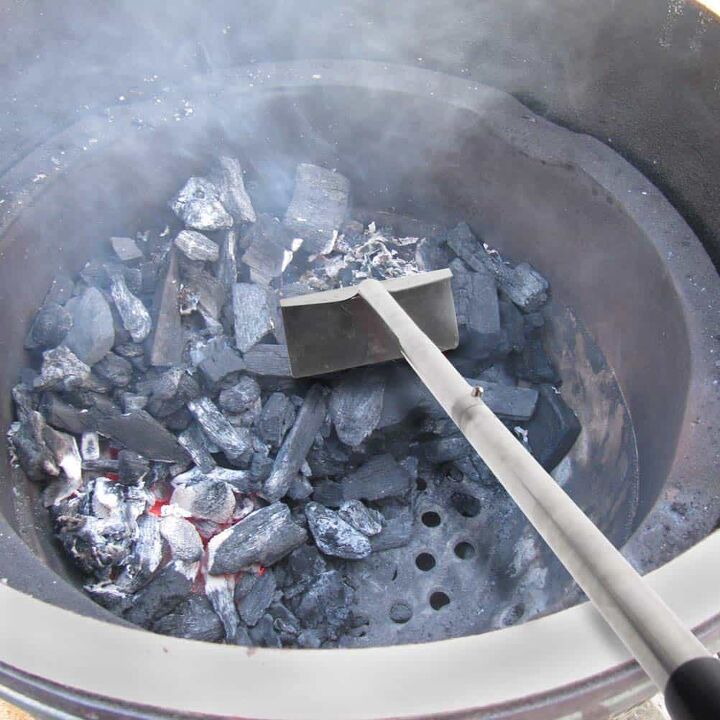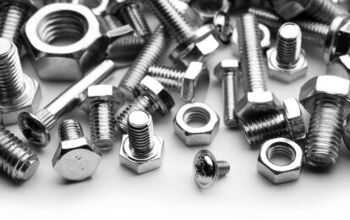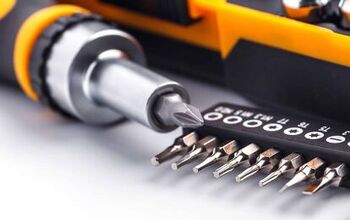25 Types of Rakes and Their Uses (with Pictures)

If you’re looking to enhance the aesthetic of your lawn or improve the soil quality in your garden, rakes are your best friend. Whether you’ve been taking care of a garden for many years or it’s your first time, a rake is one piece of lawn equipment that is absolutely essential. Rakes are essential large forks with multiple tines. Most people assume that they are used for collecting leaves, while that is true that’s the only one type of rake.
There are numerous types of rakes, categorized by their function and the material they are made out of. While garden, or bow, rakes are among the most common, landscape rakes, leaf rakes, thatch rakes, shrub rakes, concrete rakes, and hay rakes are some other variations. Rakes can also be found constructed of materials like plastic, wood, metal, bamboo, and more.
What Are The Different Types of Rakes?
Continue reading for our comprehensive guide on the many different kinds of rakes and their uses to help you determine which type you should add to your garden tool collection.
1. Garden Rake
A garden rake, also known as a bow rake, is the most common type that homeowners have in their collection and likely what comes to mind when you think of rakes. It has a relatively standard design, with usually a long, straight handle and a stiff, wide head that’s positioned at a right angle from the handle. You may also hear these types of rakes being referred to as a “ground rake,” “level head,” or “soil rake.”
Oftentimes, the head on a garden rake is made from a sturdy metal material, with short tines attached to it. The tines are very rigid and won’t flex or bend when in use, making this rake ideal for tough jobs like breaking down compacted soil. Garden rakes have multiple uses, and are designed to handle a wide array of projects rather than having one precise purpose.
This type of rake can be used for aerating soil, raking flower beds, or leveling out soil or sand. Its sturdy construction allows the user to rake up materials that are much heavier than leaves, like mulch or gravel.
2. Landscape Rake
A more specialized type of rake, landscape rakes are more likely to be found in a landscaping company’s truck bed rather than in the garage of an average homeowner. These rakes are designed to tackle large jobs quickly and efficiently, making them ideal for leveling sand or soil over a big area. For example, if a customer needs their entire yard resurfaced, a landscape rake will be used.
Landscape rakes are characterized by their exceptionally wide heads with many short metal tines attached to it. Like garden rakes, these rakes are traditionally constructed of a durable metal material that won’t flex or bend. As such, they have the ability of standing up to many hours of harsh use. You may find these types of rakes referred to as “tractor landscape rakes,” as there are a number of varieties that can be pulled behind a tractor to simplify the job.
3. Thatch Rake
Before we describe a thatch rake, it’s important that you understand what thatch is. The word ‘thatch’ refers to a layer that exists between the surface of the soil and green vegetation. It is essentially a buildup of organic debris on your lawn, which offers no benefits for your grass and can look unappealing. Thatch buildup that is over one-inch deep prevents water, air, and additional nutrients from reaching the soil and keeping your lawn healthy.
In this case, you’ll need a specially designed thatch rake in order to remove the buildup. These rakes may also be called ‘dethatching rakes,’ or ‘scarifying rakes.’ They are designed in such a way that drags out the thatch and leaves healthy grass intact, while pulling the rake along the surface of the lawn. Thatch rakes make have one side of tines on the head, but most come with two.
One side of the rake is meant for breaking up clumps of thatch, while the other side is designed for removing it. The rake’s tines are sharp, which allows them to function like blades. They are sharp enough to break down the thatch and durable enough to pull it out of your lawn.
4. Lawn Rake
Another popular type of rake, many gardeners have lawn rakes for cleaning up their backyard. Because of its similar design, lawn rakes are often mistaken for leaf rakes. However, these rakes consist of a long, straight handle and long, slender metal tines on the head that spread out to form a fan shape. While these rakes function well for raking up leaves, they have many additional uses.
The strong, yet flexible tines on a lawn rake are perfect for raking up a variety of garden debris, like sand, soil, and gravel. They can be used for dragging debris out from underneath shrubs and large plants without causing damage to the actual plant. Lawn rakes can also work for breaking up soil and, when you don’t have a thatch rake, they can be used to remove thatch buildup.
Overall, lawn rakes are an excellent multi-purpose type of rake to have in your collection. However, if your main reason for needing a rake is to rake up leaves, a plastic leaf rake is a better choice to avoid leaves getting trapped in the metal tines of a lawn rake.
5. Leaf Rake
Leaf rakes have the same fan shape and long tines as lawn rakes. The main difference between the two is that leaf rakes are made of plastic and specifically designed for raking up fallen leaves. Although they are made out of plastic, leaf rakes are much less flexible than lawn rakes, which makes them better suited for moving around lighter-weight materials. They are an essential type of rake to own for those who have trees on your property that drop leaves during the fall.
An appropriately sized leaf rake will be very efficient at clearing leaves and placing them in more manageable piles that can be bagged up or composted. Leaf rakes come in a range of widths, depending on the size of the lawn you need it for. The wider the rake, the more leaves you can rake up in a quicker amount of time.
6. Leaf Scoop Rake
Leaf scoop rakes make the manual scooping required with traditional leaf rakes much easier. With this type of rake, you can easily lift and transport the leaves into a compost pile or wheelbarrow without having to bend down. A leaf scoop rake features curved edges that open like jaws for scooping and holding onto leaves with ease.
As such, these rakes make raking a much more efficient and less messy job. They are highly recommended for anyone with back problems or who may be prone to back injuries. Leaf rakes are usually made out of plastic, and the lack of strength means they should only be used for moving piles of leaves around. They aren’t able to withstand the transportation of heavier materials, like compacted soil or gravel.
7. Shrub Rake
Shrub rakes also have a similar design to leaf rakes, but they have fewer and shorter tines. Less tines means that these rakes feature a much narrower fan shape at the head. The construction allows shrub rakes to reach smaller spaces that a garden rake or leaf rake may be too wide to get to. As such, these rakes are ideal for raking out debris from along fences or under shrubs – hence the name ‘shrub rake.’
Shrub rakes may be made out of plastic or metal and are well suited for quickly clearing out tight spots in your garden.
8. Stone Rake
Sometimes referred to as a tarmac rake or a gravel rake, stone rakes look very similar to the multi-purpose garden rake. However, they are specially designed to handle more heavy-duty jobs, as they are constructed from sturdier materials. In most cases, stone rakes feature wider heads than garden rakes, along with widely spaced, thick tines, made out of durable metal.
These rakes typically cost more than traditional garden rakes, as they necessitate superior construction in order to handle the heavy-duty tasks they are suited for. Stone rakes are ideal for spreading tough materials over the ground, like mulch, gravel, and stones – hence the name. The tines on these rakes are not bendable, as they must handle tougher materials without losing strength, or breaking.
9. Concrete Rake
Concrete rakes are used for constructing concrete patios, paths, or walkways. They feature a metal head that is flat on one side and textured on the other, with a slight curve that allows for a scooping operation. As their name suggests, these rakes are specifically designed to be used with concrete. They allow you to scoop up wet concrete and transport it to the project area before it dries. Meanwhile, the flat edge of a concrete rake is designed for leveling out concrete to yield a smooth, flat finished product.
10. Hay Rake
Hay rakes are an essential tool to have if you own a small farm. As the name indicates, they are primarily used for scraped hay off of the ground to be put into bales or for turning the hay over and spreading it around for it to dry out better. These rakes are similar in design to landscape rakes, featuring wide heads and rigid tines.
Their construction allows them to cover a large around of ground relatively fast. Some hay rakes also come outfitted with attachments that lets you attach them to the back of a tractor and operate them mechanically rather than manually.
11. Hand Rake
Hand rakes are basically miniature versions of full-sized rakes. They have the same design as full-sized rakes, but in a much smaller package with a smaller handle. The head is the same fan style, but scaled down allowing for more precise work. As such, hand rakes are well suited for gardening at close quarters, as they give you greater accuracy over the tool and its actions.
They are ideal for use on flowerbeds, or when working with containers and garden pots. Hand rakes are useful for pulling out weeds, tilling soil, scraping away old roots and debris, and removing loose stones from the surface of the soil.
A high-quality hand rake will feature a durable metal head with sturdy tines that are not bendable. The handle may be wooden or constructed from metal, but wooden handles are more ergonomic which yields a more comfortable operation.
12. Lake Rake
Also called algae rakes or pond lakes, lake rakes are a specialized type that is meant to be used on a body of water. To use a lake rake, you stand at the edge of a pond, lake, or river and drag the rake over the surface of the water to collect algae or aquatic weeds. This type of rake makes removing this debris easy and efficient. They are crucial for keeping your water clean and healthy if you live in a lake house or have a pond on your property.
There are other versions of lake rakes with extra-long handles that are designed to be fixed on the back of a boat. That way, the user can easily extend the rake out from the boat.
13. Roof Rake
Roof rakes are among the most lightweight types, as they are meant for use on roofs and must be easy to hold over your head or while standing on a ladder. These rakes feature plastic, angled heads for scooping snow or other debris off of a roof. The handles are extra-long, usually extendable, allowing the user to operate the rake from a good distance away. That way, none of the material that gets pulled down from the roof can fall on top of the user.
These rakes are ideal for those who live in areas that see several feet of snowfall at a time in the winter. A roof rake will remove potential hazards that may cause structural issues to your home. Snow accumulation is very heavy and can put significant strain on your roof, and may even cause it to collapse. As such, roof rakes are a great investment to remove snowy buildup, and also the buildup of leaves, and other debris.
14. Fire Rake
Mostly used by firefighters, fire rakes may be beneficial to own if you live in an area that is prone to wildfires. Keeping one in your garage for use during emergency situations may give you some peace of mind. These rakes feature strong metal tines with a wide, triangular shape. They are operated with a pushing motion to push earth on the flames and prevent them from spreading further.
Fire rakes are designed to help control the spread of fire and stop it from progressing to an area that has already burned. These types of rakes may have long or extendable handles that allow the operator to use them from a safe distance without having to get too close to the flames.
15. Berry Rake
Berry rakes are hand-held tools with a small rake on the end, and an attached bucket-like container. The purpose of these rakes is for gently plucking berries out of tall trees, catching any of the fallen berries into the rake bucket. If you have berry trees on your property that require harvesting every year, a berry rake is an excellent time-saving device to own.
It will help you get the most out of your trees and be much easier and more convenient than standing on a ladder and collecting the berries by hand.
These rakes also allow you to reach fruit that you may not ordinarily be able to get to, while reducing the mess on the ground. Berry rakes are a specialized variety that only function for the purpose of harvesting berry trees.
16. Ash Rake
If you have a fire pit or barbecue grill, you may be familiar with an ash rake. This type of rake is almost exclusively used for cleaning out your various cookout devices. They feature a small, smooth head and a short handle, which makes it easy to maneuver the tool into the fireplace, fire pit, or grill.
Ash rakes are primarily used for scooping or pulling out ash when it needs to be removed or relocated out of the fire pit – hence the name ‘ash rake.’ These rakes may also be called ‘charcoal rakes,’ as they can be used for moving around the charcoals on a charcoal grill.
17. Dog Rake & Scooper
A dog rake and scooper, or pooper scooper, is a tool that most pet owners have in their collection and it has one distinct purpose – to collect your dog’s poop. It is a set that features a small rake and a scooping pan. For ease of use, most of these rakes feature extendable handles that also help to avoid unnecessary back pain.
Operating a dog rake and scooper is similar to how you use a broom and dustpan in your home. The rake latches onto the waste and is used to direct it into the scooper, all without having to bend over to pick it up! They may be made out of plastic or metal, and for easier cleanup you can place a bag inside of the pan.
18. Power Rake
A power rake is a heavy-duty garden tool that is mainly used by professional landscapers. It has the ability to quickly remove debris on the lawn and lift and dig up thatch, which is a nearly unbearable task with a manual thatch rake. With a power rake, all the user has to do is push along the device, and the engine propels it along. These rakes are outfitted with a rotating head and metal tines that scrape deeply into the lawn to free small twigs, dead leaves, and thick layers of thatch.
This process can improve air circulation and allow the sun to reach the lowest portions of the grass blades. Some power rake models come with collection bags, while the others simply deposit the debris behind the machine. With these, the user must then use a leaf rake or lawn vacuum to clean up the debris. Depending on the model you have, your power rake may operate on electricity or gasoline.
Rake Construction
Another way to classify the various types of rakes is based on their construction. Rakes can be made out of many different materials depending on their purpose, as more durable materials should be used for tougher jobs and vice versa. With that said, here are some of the most common rake construction materials:
1. Plastic
Plastic rake heads may have benefits or drawbacks, depending on what you intend to use the rake for. Some rakes may only come with plastic heads, like roof rakes, as they need to be lightweight enough to be used overhead. For roof rakes, a plastic head also makes the most sense since it carries little risk of scratching or damaging the roof while in use.
Leaf rakes, on the other hand, may have a plastic or a metal head. If you intend to use a leaf rake for raking up leaves, plastic is the best way to go. The limited flexibility makes it well suited for scooping up lightweight debris like leaves, without getting jammed into the tines – like it would with metal tines.
Another advantage of plastic rake heads is that they keeps the overall construction lightweight and less strenuous to operate, which can be very beneficial for children or elderly individuals to use without having to exert too much effort.
Not to mention, plastic rakes are cheaper to manufacture, making them more affordable to purchase.
2. Wood
Wood handles are very common among a variety of rakes. In fact, most homeowners opt for rakes that are made out of wood. The material often yields a rake that is lightweight and has a long lifespan, so long as it is properly taken care of. While there is a risk of getting splinters when operating a wood rake, using gloves and trying to avoid damage to the rake will reduce this possibility.
Rakes with wood handles must be stored indoors, in a shed or garage, when they’re not in use. Even treated wood will start to rot and show signs of damage from the elements if left unprotected. Rakes with wooden handles may have heads made out of metal, plastic, or even bamboo.
3. Metal
Rakes that have long and narrow tines made from metal are usually more expensive than plastic. However, they carry the benefit of being longer-lasting, which translates to being more cost-effective over time. As opposed to plastic or bamboo, metal heads won’t crack or snap. They also allow for more flexibility, as you can easily rake heavy or large items and they’ll bounce back to their original shape.
Metal heads on rakes can handle a wider variety of materials than a plastic head, as plastic is mostly only suitable for raking leaves. Tines made out of metal can also handle tougher materials, like mulch, sand, soil, and gravel. Metal tines aren’t recommended for use with leaves as they can puncture the leaves and clog up the head, which makes the project messier and more time-consuming. When it comes to metal handles, the most common type of metal used is aluminum.
4. Aluminum
Aluminum handles are very lightweight and often come with a collapsible feature, meaning you can easily make the rake shorter or longer as needed. However, these handles are susceptible to denting or bending when they’re tossed around frequently or not taken care of. You can also purchase landscape rakes that feature aluminum heads. While they’ll be a more affordable option than any other type of metal, they offer little in terms of durability.
With that said, if you need a sturdy rake for tough jobs, aluminum is one type of construction material that you should avoid. Beef up your yard work with these top 9 chainsaw brands.
5. Steel
Steel, on the other hand, is used in the construction of rake heads that are intended to be durable and rigid. As such, most thatch rakes feature heads made out of steel. Since these rakes are designed to move around hard materials like stones, steel heads are required as they won’t bend or break under excessive weight or pressure.
You can also purchase rakes with steel handles, which are the most durable and heaviest type of handle available. Unlike wood, steel handles won’t rot, bend, break, or rust. While a steel rake may be more expensive than any other material, it is a great investment to make since it will likely outlive any other type of rake you could purchase.
6. Fiberglass
Rake handles made out of fiberglass offer an excellent compromise of weight and strength. They are almost as lightweight as aluminum rakes, which makes them easier to handle and maneuver. However, they offer the additional benefit of being much stronger than aluminum. There is less of a chance of your fiberglass rake breaking or becoming damaged when it has a fiberglass handle.
Although a fiberglass rake will cost more than its aluminum counterparts, you’ll enjoy ease of use and longevity.
7. Bamboo
Though less common, bamboo rakes are a strong option. However, they are not as brittle or strong as plastic rakes. One of the main reasons for opting for a bamboo rake is because the material is eco-friendly. When a bamboo rake has reached the end of its life, you can compost all the pieces that are made out of bamboo.
Bamboo rakes are also very durable, even as the tines start to wear down with everyday use. Although the tines will reduce in size over time, they will still function well. The tines are also usually very soft, which makes them suitable for moss and other similar types of vegetation. As you might expect, though, bamboo rake heads are highly susceptible to damage when used on coarser terrain.
If you want an environmentally friendly alternative to traditional rakes, one with a bamboo head may be the right choice for you. They often feature wooden handles, which are better on the skin and less likely to cause blisters than metal.
Related Questions
Are metal or plastic rakes better?
Both metal and plastic rakes work great for distinct purposes, and neither one is superior than the other. When you need to remove a large amount of fallen leaves, plastic leaf rakes are more effective than metal rakes. They also work well for lighter jobs, like sifting soil. Meanwhile, metal rakes are better for more robust gardening tasks. Such tasks include moving gravel, tree branches, and also mixing fertilizing into soil.
How long is a standard rake?
The average length of a standard rake is between 22 and 30 inches long. Be sure to keep dimensions in mind as you’re shopping for a rake, as the sizing will determine how easy the tool is to handle. As a general rule of thumb, the ideal rake size is one that reaches that extends from the floor to the bridge of your nose.
Related Articles

Jessica considers herself a home improvement and design enthusiast. She grew up surrounded by constant home improvement projects and owes most of what she knows to helping her dad renovate her childhood home. Being a Los Angeles resident, Jessica spends a lot of her time looking for her next DIY project and sharing her love for home design.
More by Jessica Stone

















![How Much Weight Can a 4×4 Support Horizontally? [It Depends!]](https://cdn-fastly.upgradedhome.com/media/2023/07/31/9070333/how-much-weight-can-a-44-support-horizontally-it-depends.jpg?size=350x220)
![10 Best Scroll Saws for 2022 [Ultimate Reviews & Buyer's Guide]](https://cdn-fastly.upgradedhome.com/media/2023/07/31/9070684/10-best-scroll-saws-for-2022-ultimate-reviews-buyer-s-guide.jpg?size=350x220)












